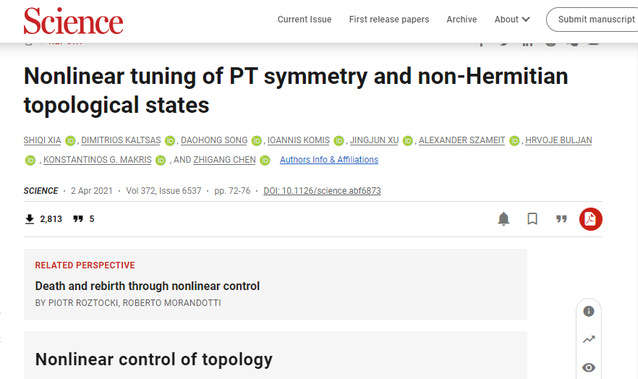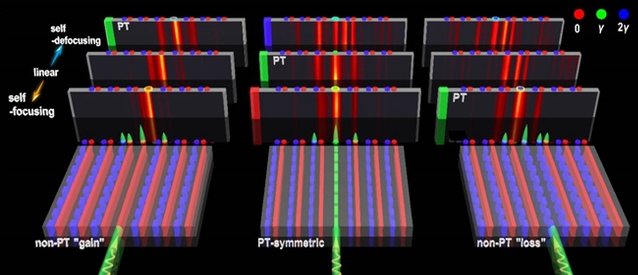
The research group led by professor Zhigang Chen and professor Jingjun Xu from the School of Physics of Nankai University and TEDA Institute of Applied Physics, with cooperation with research groups from University of Zagreb in Croatia, University of Crete in Greece and University of Rostock in Germany, established a nonlinear non-Hermitian topological photonics platform for the first time in the world. Thus, the manipulation of parity-time symmetry and non-Hermitian topological states in an optical system can be realized by using nonlinearity. The research team also found the antagonistic effects on the sensitivity and robustness of topological states in non-Hermitian systems when close to the exceptional point that determines the breakdown of the PT symmetry. The team also discovered the control principle of the overall PT symmetry of the system through local nonlinearity. This innovation brings about new insight towardsnonlinear effects in the open topological systems while pioneering a new perspective for the research of nonlinear topological photonics and its related frontier fields. Entitled Nonlinear tuning of PT symmetry and non-Hermitian topological states, the research result was recently published in the prestigious journal Science.

Nankai University was the first affiliation for the research work. Shiqi Xia, Ph.D. student of Nankai University, Kaltsas, Ph.D. student of University of Crete, Greece, and Daohong Song, Professor of Nankai University, were the co-first authors. Meanwhile, Zhigang Chen, Chair Professor of Nankai University, H. Buljan, specially appointed Distinguished Professor of Nankai University and Professor of University of Zagreb, Croatia, and K. Makris, Professor of University of Crete, Greece, are co-corresponding authors, while A. Szameit of the University of Rostock in Germany and other scholars also collaborated in the research. The research was supported by grants from the Key R&D Program of the Ministry of Science and Technology and the National Natural Science Foundation of China.
the Paper Link: https://science.sciencemag.org/content/372/6537/72



